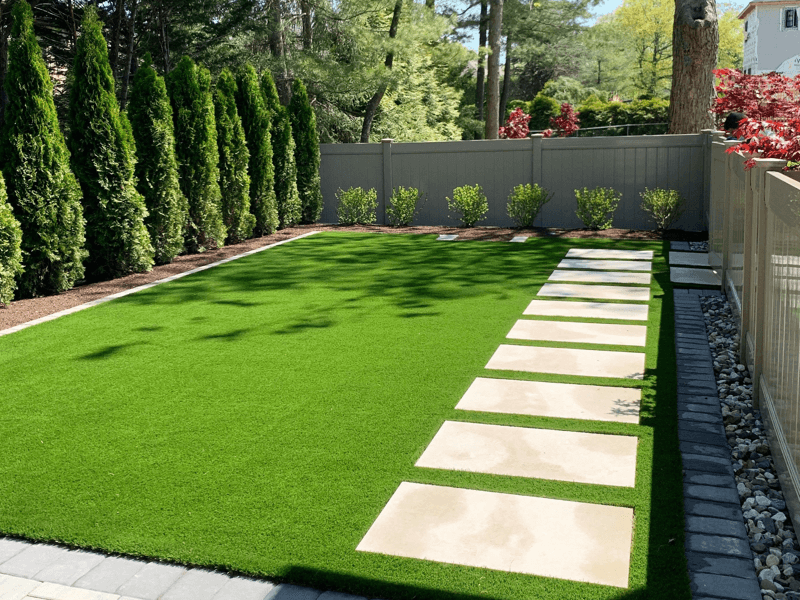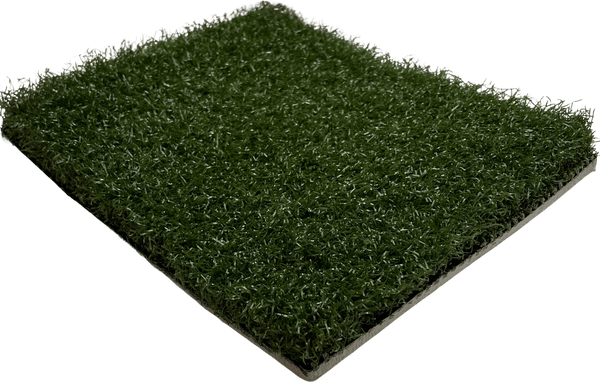Budget-Friendly Turf Installation Phoenix AZ for a Easy-Care Lawn Option
Budget-Friendly Turf Installation Phoenix AZ for a Easy-Care Lawn Option
Blog Article
Delve Into the Environmental Advantages of Opting for Synthetic Grass Solutions
The fostering of synthetic grass options offers an engaging chance to attend to pressing environmental obstacles. By considerably reducing water use and minimizing the application of harmful chemicals, these choices not only advertise sustainable landscape design but likewise safeguard local communities.
Water Conservation Conveniences
One of the most substantial advantages of man-made grass is its capability to preserve water. In comparison, synthetic turf does not need watering, considerably decreasing the general need for water sources.
By getting rid of the need for routine watering, synthetic turf adds to sustainable landscape methods and assists reduce the ecological effect of excessive water intake. Moreover, the preservation of water extends to the decrease of drainage, which can lead to soil disintegration and waterway pollution.
Additionally, the setup of synthetic grass enables municipalities and homeowners to designate water resources much more efficiently, concentrating on necessary uses such as alcohol consumption water and farming. The shift in the direction of synthetic grass not just advertises liable water usage yet additionally lines up with broader environmental goals aimed at preserving natural deposits.
As communities increasingly focus on sustainability, the water preservation benefits of synthetic grass provide an engaging instance for its adoption in residential and business landscaping projects.
Decreased Chemical Usage
The shift to man-made grass dramatically reduces the reliance on chemical therapies commonly made use of in all-natural grass upkeep. Conventional lawn monitoring generally includes the application of herbicides, chemicals, and fertilizers to advertise growth and control pests. These chemicals can posture threats to human health and wellness, local wildlife, and the environment, adding to soil and water contamination.
In contrast, fabricated turf eliminates the need for these unsafe substances. As soon as mounted, it calls for very little maintenance, mostly including normal cleansing and seldom infill replenishment. This decrease in chemical use not just benefits the immediate environment yet also adds to wider eco-friendly stability. By reducing the release of synthetic compounds right into the ecosystem, synthetic grass advertises healthier dirt and water systems.
Additionally, the lack of chemical overflow related to synthetic grass installations helps protect local waterways from pollution, sustaining water life and keeping biodiversity. Phoenix turf companies. As areas significantly prioritize sustainable techniques, opting for synthetic turf provides a feasible option that lines up with environmental preservation objectives. Through this change, property proprietors can take pleasure in rich green rooms without compromising ecological wellness, paving the method for a much more lasting future
Reduced Carbon Footprint

Additionally, the installment of synthetic grass can result in substantial water preservation. All-natural yards require considerable quantities of water for watering, which not only includes in the carbon impact related to water extraction and treatment yet also pressures local water resources. On the other hand, synthetic grass needs very little maintenance, calling for no watering, consequently significantly decreasing water usage and its associated power expenses.
Furthermore, the longevity of synthetic turf adds to its reduced carbon influence. With a lifespan of up to 15 years or more, the requirement for constant replacements is reduced, leading to much less waste and lower energy consumption in manufacturing and getting rid of standard grass options. Overall, fabricated grass offers a lasting alternative for ecologically conscious landscape design.
Habitat Conservation
Environment preservation is an essential consideration in the debate over landscaping choices, particularly when contrasting synthetic grass to natural turf. All-natural grass yards usually require substantial upkeep, including Arizona artificial turf making use of pesticides, plant foods, and herbicides, which can detrimentally affect local ecosystems. These chemicals can seep right into the dirt and rivers, harming indigenous vegetation and animals and interrupting regional habitats.
In contrast, synthetic grass provides an opportunity to lower the ecological footprint of landscaping. By selecting synthetic yard, property owners can decrease the disturbance of natural habitats associated with traditional grass treatment techniques. Synthetic grass gets rid of the requirement for hazardous chemicals, therefore securing neighboring wildlife and preserving the stability of bordering environments. Furthermore, the installation of synthetic grass can cause the conversion of previous grass why not try this out areas into even more biodiverse landscapes, such as pollinator yards or native plant areas, which can support neighborhood wild animals.
Inevitably, the change to fabricated turf not just conserves water and minimizes maintenance initiatives but additionally cultivates a much more unified partnership in between human activities and the all-natural atmosphere, advertising habitat conservation while doing so.
Long-Term Sustainability
Long-lasting sustainability is a critical consider examining the benefits of artificial grass over standard grass lawns. Among one of the most considerable advantages of synthetic grass is its sturdiness; it can last as much as 15-20 years with minimal maintenance, whereas all-natural grass needs regular reseeding and substitute. This longevity lowers the need for constant sources, such as water, fertilizers, and chemicals, which are important for maintaining a healthy and balanced yard lawn.
In addition, fabricated turf adds to a decrease in carbon emissions connected with lawn care equipment. Standard grass often require gas-powered lawn mowers, leaners, and blowers, all of which add to air pollution. Arizona turf. In contrast, synthetic grass gets rid of the demand for such equipment, advertising a cleaner atmosphere
In addition, the manufacturing of artificial lawn increasingly utilizes recycled materials, this hyperlink enhancing its sustainability account. As makers embrace environmentally friendly methods, the ecological footprint of synthetic grass continues to reduce.

Final Thought
The adoption of synthetic grass options provides significant ecological benefits, including considerable water preservation, lowered dependence on hazardous chemicals, and a reduced carbon footprint. Fabricated lawn help in maintaining natural environments by reducing land disturbance and promoting long-term sustainability via the use of sturdy materials. Jointly, these elements highlight the capacity of man-made turf to add favorably to ecological health and wellness and use a practical choice to standard landscaping practices in a significantly resource-conscious world.
In contrast, man-made lawn does not require watering, significantly minimizing the general demand for water sources. By reducing the launch of artificial substances right into the community, man-made turf advertises healthier soil and water systems.
Furthermore, the installment of artificial lawn can result in substantial water conservation. In comparison, man-made turf needs marginal upkeep, needing no watering, consequently substantially reducing water use and its associated power expenses.

Report this page